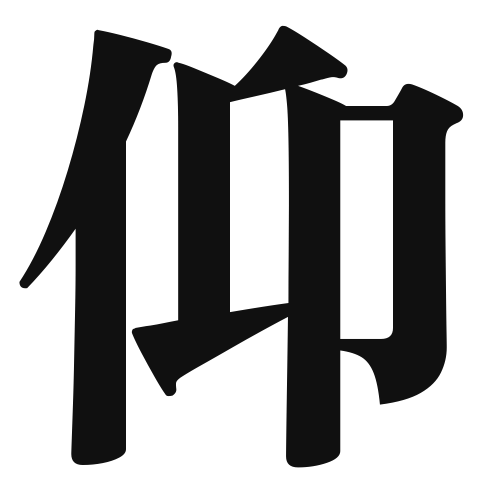1. Overview of Meaning
The kanji “仰” (pronounced “gyou” or “ou”) generally means “to look up” or “to face upward.” It conveys a sense of respect or admiration, often used in contexts where one is looking up to someone or something.
2. Formation and Radical
Formation of the Kanji: The kanji “仰” is a compound character (会意文字) that combines elements to convey its meaning. It consists of the radical “亻” (which represents a person) and the character “昂,” which suggests elevation or height.
Radical: The radical of “仰” is “亻,” which is related to human actions and characteristics.
3. Examples of Usage
Common Words and Phrases: Some frequently used words that include “仰” are “仰天” (gyouten – to look up at the sky) and “仰慕” (gyoubo – to admire or revere).
Example Sentences in Daily Conversation:
- 彼は仰ぎ見るほどの偉大な人物です。 (He is a great person whom I look up to.)
- 子供たちは仰いで星を見上げていました。 (The children were looking up at the stars.)
4. Synonyms and Antonyms
Similar Kanji: A similar kanji is “尊” (son), which means “to respect” or “to honor.” While both convey a sense of admiration, “仰” emphasizes the action of looking up, whereas “尊” focuses more on the feeling of respect.
Antonyms: An antonym of “仰” could be “俯” (fu), which means “to look down.” This represents the opposite action of looking up.
5. Cultural and Historical Background
Relation to Japanese Culture: The kanji “仰” is often used in contexts that reflect respect and admiration, which are important values in Japanese culture. It can be seen in various traditional practices and expressions of reverence.
Proverbs and Idioms: One common expression is “仰ぎ見る” (aogimira), which means to look up to someone with admiration, often used to describe a mentor-student relationship.
